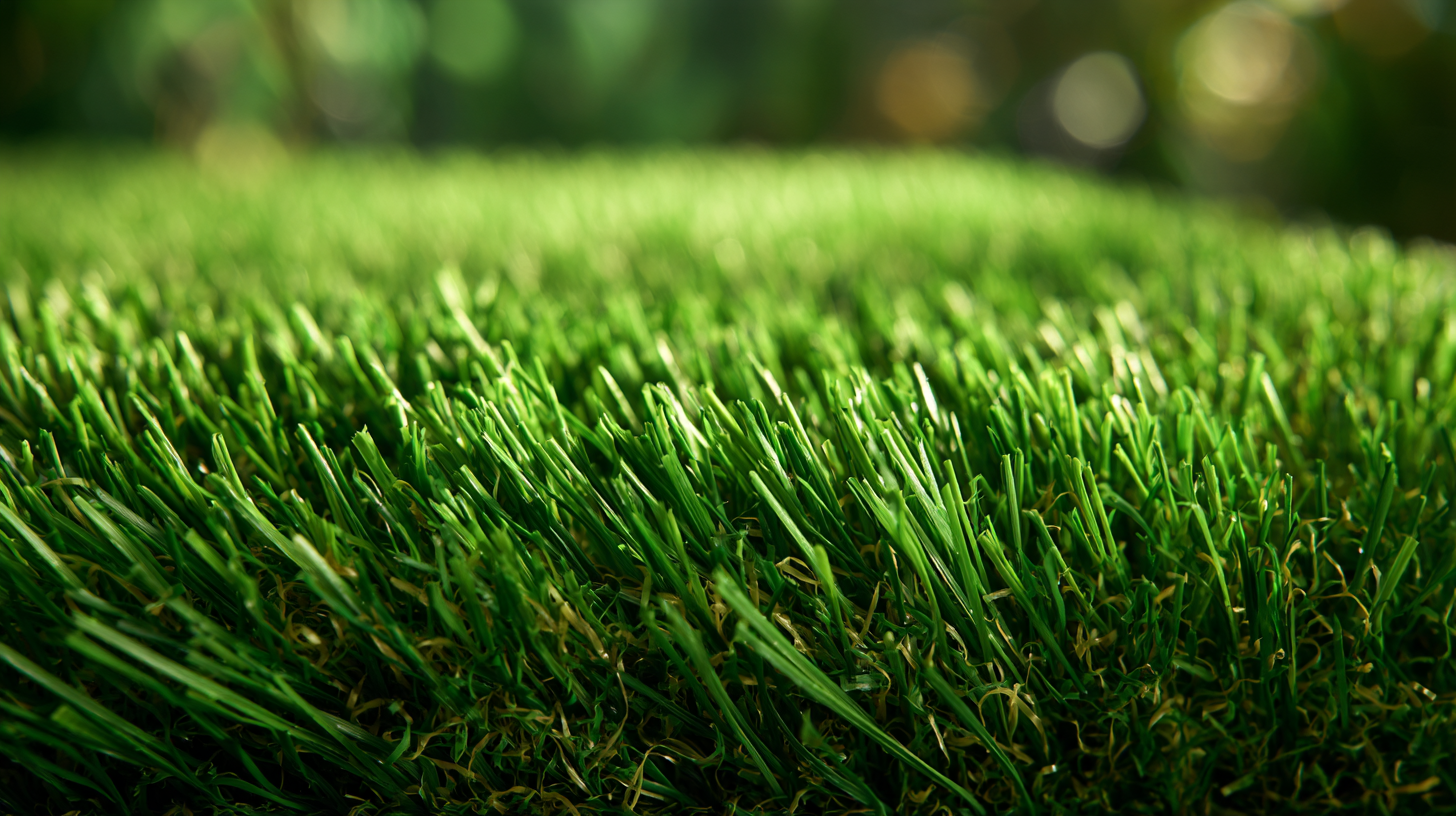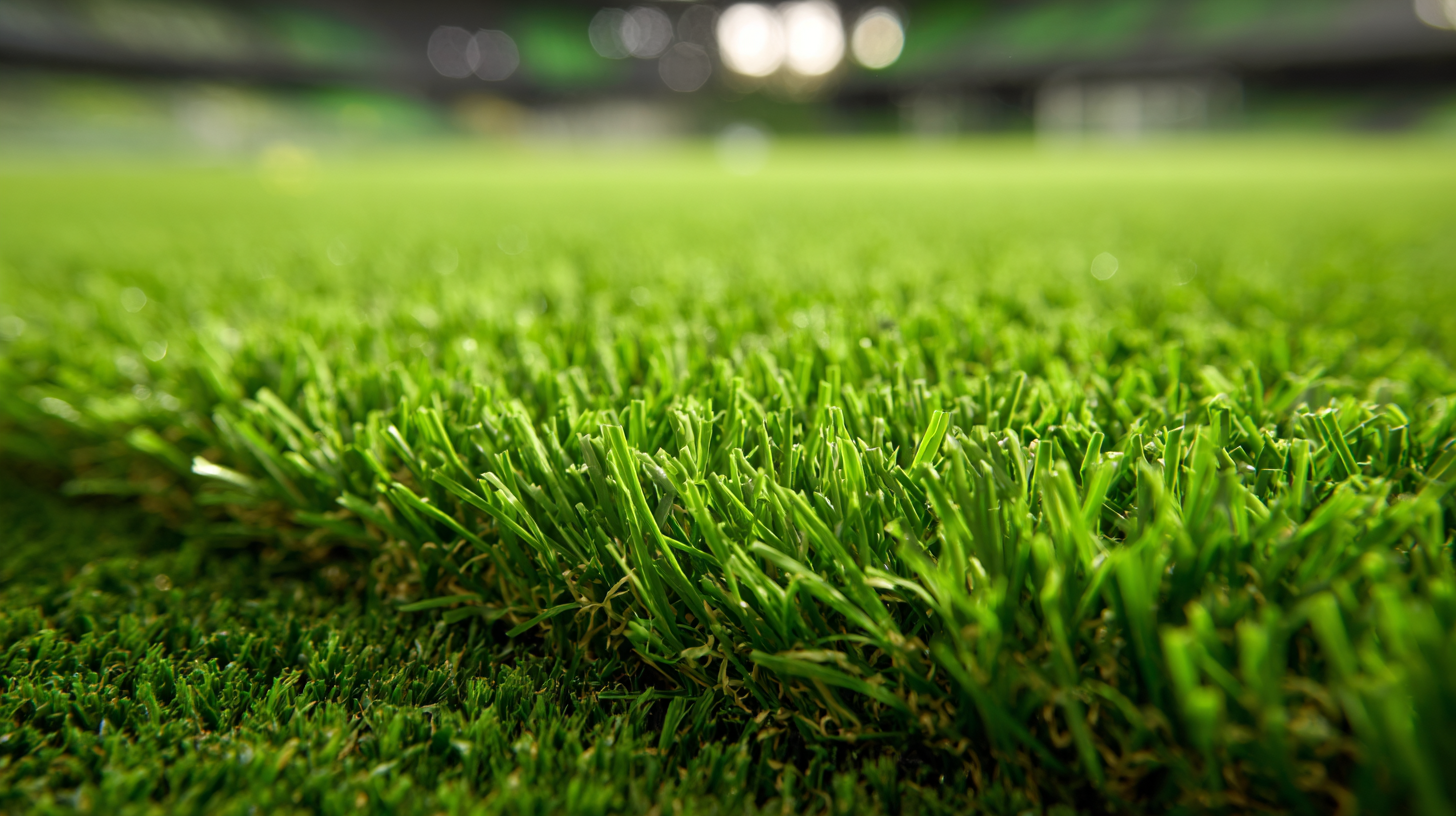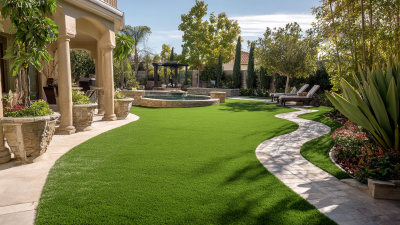Choosing the right turf grass for your lawn needs is a pivotal decision that can significantly impact both the aesthetics and functionality of your outdoor space. According to the National Turfgrass Evaluation Program (NTEP), understanding the specific requirements of different turf grass types can enhance water efficiency by up to 30%, reducing both maintenance costs and environmental stressors. With over 100 varieties available, selecting the best turf grass involves considering factors such as climate, soil type, and intended use, whether for high-traffic areas or ornamental purposes. Additionally, the Lawn Institute reports that well-maintained turf grass can improve air quality, reduce soil erosion, and keep temperatures cooler in surrounding areas. This guide aims to equip you with essential tips to navigate through the complexities of turf grass selection, ensuring your lawn thrives sustainably and beautifully.

When selecting the best turf grass for your lawn, it’s crucial to consider your specific climate zone, as different grass types thrive under varying conditions. According to the USDA Plant Hardiness Zone Map, understanding your zone can help inform the choice between cool-season grasses, like Kentucky bluegrass, and warm-season varieties, such as Bermuda grass. Cool-season grasses typically perform best in northern regions where temperatures are moderate, showing optimal growth during spring and fall. Conversely, warm-season grasses flourish in the southern areas, thriving in the heat of summer and entering dormancy in the colder months.
Additionally, the National Turfgrass Federation emphasizes the importance of local rainfall patterns, soil type, and sunlight exposure. For instance, grasses such as tall fescue are well-suited for transitional zones, as they tolerate a range of conditions while offering drought resistance. Moreover, environmental data reveals that selecting the right turf grass can reduce water usage by up to 50%, promoting a sustainable lawn care approach. With careful consideration of these factors, homeowners can achieve a lush and resilient lawn that aligns with their regional climate and maintenance goals.
| Grass Type | Climate Zones | Sun Requirements | Water Needs | Maintenance Level |
|---|---|---|---|---|
| Kentucky Bluegrass | Cool Season (Zones 3-7) | Full Sun to Partial Shade | Moderate | High |
| Bermudagrass | Warm Season (Zones 7-10) | Full Sun | Low | Moderate |
| Tall Fescue | Transition Zone (Zones 5-7) | Full Sun to Partial Shade | Moderate | Low |
| Zoysiagrass | Warm Season (Zones 6-9) | Full Sun to Partial Shade | Low | Moderate |
| Perennial Ryegrass | Cool Season (Zones 4-7) | Full Sun to Partial Shade | Moderate | Low |
When selecting the ideal turf grass for your lawn, understanding the differences between cool-season and warm-season grasses is crucial. Cool-season grasses, such as Kentucky bluegrass and tall fescue, thrive in the northern regions where temperatures are moderate. They grow best in spring and fall, developing a deep green hue and a robust root system during cooler months. These grasses are well-suited for areas that experience cold winters and moderate summers, providing lush growth and great resilience under stress.
On the other hand, warm-season grasses, such as Bermuda and Zoysia, are designed for warmer climates and flourish in the heat of summer. They enter a dormant phase during the cooler months, which makes them ideal for southern lawns that don't endure harsh winters. These grasses boast excellent drought resistance and recover quickly from wear, making them perfect for high-traffic areas. Understanding these differences in growth patterns and environmental preferences helps homeowners choose the right turf grass that meets their specific lawn needs and local climate conditions.
When selecting the best turf grass for your lawn, understanding the impact of soil type is crucial. Different soil types—sandy, clay, or loamy—affect water retention, nutrient availability, and root development, all of which significantly influence the growth and health of turf grass. According to the University of Florida's Institute of Food and Agricultural Sciences, sandy soils tend to drain quickly and may require more frequent watering and fertilization, whereas clay soils can retain moisture but may lead to compaction and poor drainage. These characteristics can ultimately determine the best grass species for your specific conditions.
 For instance, Kentucky Bluegrass thrives in loamy soils, which provide the right balance of drainage and nutrient retention, making it ideal for cooler regions. Conversely, warm-season grasses like Bermuda and Zoysia perform better in sandy soils where they can establish deep root systems. A report by the American Society of Agronomy indicates that understanding these soil dynamics not only enhances aesthetic appeal but can also reduce water usage by up to 30% when appropriate grass types are chosen for the soil conditions. This tailored approach ensures that your lawn remains healthy and vibrant while being environmentally sustainable.
For instance, Kentucky Bluegrass thrives in loamy soils, which provide the right balance of drainage and nutrient retention, making it ideal for cooler regions. Conversely, warm-season grasses like Bermuda and Zoysia perform better in sandy soils where they can establish deep root systems. A report by the American Society of Agronomy indicates that understanding these soil dynamics not only enhances aesthetic appeal but can also reduce water usage by up to 30% when appropriate grass types are chosen for the soil conditions. This tailored approach ensures that your lawn remains healthy and vibrant while being environmentally sustainable.
When selecting the ideal turf grass for your lawn, understanding the water accessibility and maintenance needs of various grass types is essential. Different varieties of grass have varying tolerances to drought and moisture. For instance, Kentucky bluegrass thrives in well-watered environments, requiring regular irrigation to maintain its lush appearance. In contrast, fescue grasses, such as tall fescue, exhibit greater drought resistance, making them a suitable choice for regions with limited water supply.
Maintenance requirements also differ significantly among grass types. Some grasses, like Bermuda and zoysia, are robust and can handle heavy foot traffic, but they demand more frequent mowing and fertilization to remain healthy. On the other hand, shade-tolerant grasses such as fine fescue require less maintenance but might struggle in sunny areas. Understanding these characteristics will help homeowners make informed decisions tailored to their specific climate, water availability, and desired lawn aesthetics, ensuring a vibrant and sustainable landscape.

When selecting turf grass for your lawn, evaluating disease resistance is crucial for maintaining a healthy and vibrant landscape. Different varieties exhibit varying levels of resilience against common lawn diseases such as brown patch, dollar spot, and powdery mildew. For instance, Kentucky bluegrass may be appealing for its rich color but tends to be more susceptible to diseases compared to tall fescue, which is known for its robust tolerance and ability to thrive under stressful conditions. By choosing disease-resistant varieties, homeowners can reduce the need for chemical treatments and minimize maintenance efforts.
Additionally, it's essential to consider the specific growing conditions of your lawn. Factors such as climate, sun exposure, and soil type can significantly impact the performance of different turf grasses. Zoysia grass, known for its drought resistance and shade tolerance, is an excellent choice for areas that receive limited sunlight. Conversely, perennial ryegrass establishes quickly and is ideal for cooler climates, offering both aesthetics and durability. By understanding the strengths and weaknesses of various turf grass species, homeowners can make informed decisions that lead to a lush, healthy lawn with reduced disease incidence.
This chart illustrates the disease resistance levels of various turf grass varieties. Understanding the resistance can help you choose the best grass for a healthy lawn.












